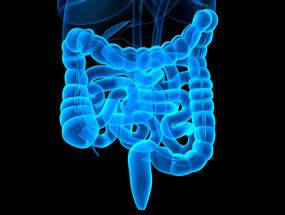Five Categories of Lower Gastrointestinal Functional Bowel Disorders in Revised Rome IV Criteria
The new Rome IV criteria classify the functional bowel disorders into five distinct categories, including irritable bowel syndrome (IBS), functional constipation, functional diarrhea, functional abdominal bloating/distention, and unspecified functional bowel disorder. A new category for opioid-induced constipation, which is distinct from the functional bowel disorders, has been added.

“Research in the basic and clinical sciences during the past decade has produced new information on the epidemiology, etiology, pathophysiology, diagnosis, and treatment of functional bowel disorders,” said Fermin Mearin, MD, PhD, of Hospital Quiron in Barcelona, Spain, at a presentation at Digestive Disease Week 2016, a joint meeting of the American Academy for the Study of Liver Diseases (AASLD), American Gastroenterological Association (AGA), the American Society for Gastrointestinal Endoscopy (ASGE), and the Society for Surgery of the Alimentary Tract (SSAT).
The new Rome IV criteria classify the functional bowel disorders into five distinct categories, including irritable bowel syndrome (IBS), functional constipation, functional diarrhea, functional abdominal bloating/distention, and unspecified functional bowel disorder. A new category for opioid-induced constipation, which is distinct from the functional bowel disorders, has been added.
“The main change is conceptual in that these disorders are not independent entities. There is huge overlap, with data increasingly showing that functional disorders are part of a larger spectrum,” said Mearin. “In fact, often times, it can be impossible, for example, to distinguish between IBS with constipation (IBS-C) and functional constipation or IBS with diarrhea (IBS-D) and functional diarrhea.” The data show that, over time, patients often transition quite frequently between one functional bowel disorder to another or from one predominant symptom to another.
With regard to IBS, the word “discomfort” has been eliminated from the definition of IBS. The definition of IBS has been updated to read: “recurrent abdominal pain, on average, at least 1 day per week in the last 3 months, associated with 2 or more of the following criteria: related to defecation, associated with a change in frequency of stool, and associated with a change in form (appearance) of stool.”
“The change in the definition of IBS to exclude the term ‘discomfort’ from the current definition and diagnostic criteria is important because the word doesn’t exist in all languages and is confusing and nonspecific,” Mearin explained.
In contrast to the previous Rome III criteria, the new definition involves a change in the frequency of abdominal pain from at least 3 days per month now to at least 1 day per week during the past 3 months; this change is based on the latest data that suggest that abdominal pain occurs more frequently than previously recognized. Additionally, “improvement with defecation” has now been replaced by “related to defecation” to reflect the reality that many IBs patients do not experience improvement in their abdominal pain with defecation, but instead, may actually experience a worsening of abdominal pain.
With regard to functional constipation, the new criteria now specify that abdominal pain and/or bloating may be present but are not predominant symptoms, which supports the concept that functional constipation and IBS-C are disorders that exist on a continuous spectrum. A similar change was made for functional diarrhea. In addition, to reflect the latest data, the diagnostic criteria for functional diarrhea were changed to stipulate that >25%, rather than 75%, of stools are loose.
The definition of functional abdominal bloating/distension has been changed to add the phrase “abdominal fullness, pressure or a sensation of trapped gas” to more accurately reflect the symptoms that patients typically report. The change also helps to distinguish functional abdominal bloating, with an associated increase in abdominal girth, from more subjective symptoms of bloating.
The new criteria also reflect the use of new technologies, such abdominal plethysmography, and insights into the pathophysiology of distention. Finally, the guidelines now recognize that patients with functional abdominal bloating/distension may also report symptoms of mild abdominal pain a/or minor bowel movement abnormalities.
Finally, a separate category was created for opioid-induced constipation, which the committee felt should not be considered a distinct functional gastrointestinal disorder but instead should be categorized as an opioid-induced adverse event. Mearin noted that there may, however, frequently be overlap between the disorders; for example, functional constipation may overlap with or exacerbate OIC.